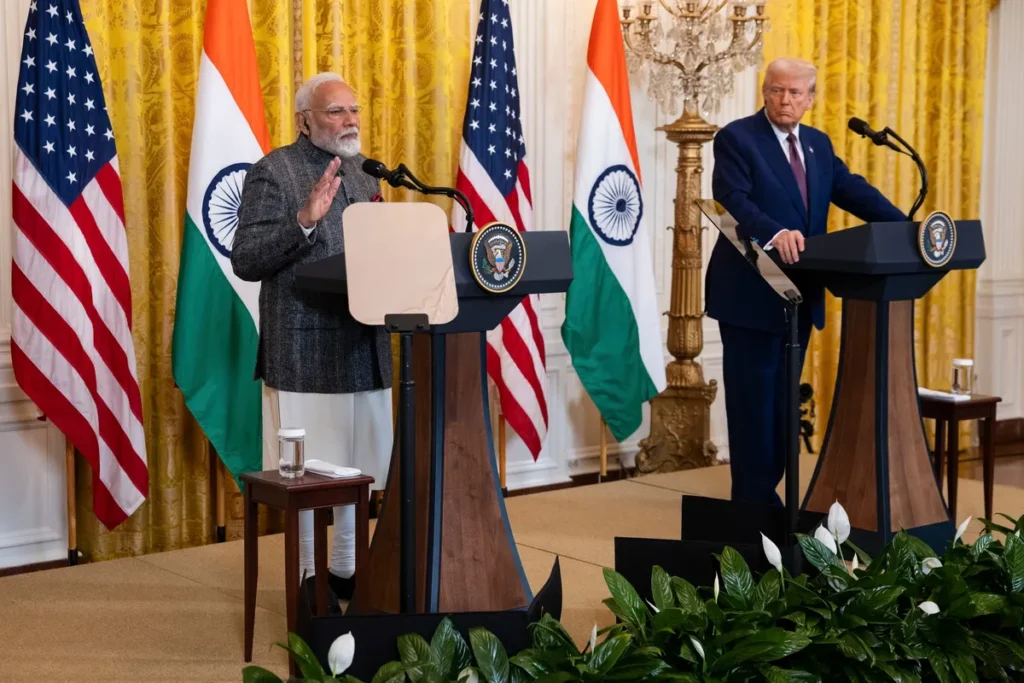Strategic Trademanship
The trajectory of the India-US ‘mini trade deal’ under President Donald Trump’s second tenure demonstrates India’s strategic acumen in the face of aggressive tariff diplomacy. Union Commerce and Industry Minister Piyush Goyal, steering New Delhi’s posture, has ensured that Indian national interest remains impervious to Washington’s blitz of deadlines, thereby positioning himself as a negotiator the US cannot easily bypass. In February 2025, PM Modi’s Oval Office conclave with President Trump set an ambitious target – doubling bilateral trade to $500 billion by 2030. Reciprocally, Trump issued a sweeping 27% tariff on Indian exports – cognisant that India’s average applied tariff stood at 12 %, versus the US’s 2.2 % – thereby reiterating his ‘America First’ posture. Goyal responded not with panic, but with composure; India will “never make a trade deal based on a deadline or time frame” he affirmed, insisting that “national interest will always remain supreme”. Union Minister Goyal’s strategic playbook is clear: concede tactically on select industrial goods, such as auto components, petrochemicals, electric vehicles (EVs), and tree nuts, while resolutely defending agriculture, dairying, wheat, and genetically modified (GM) crops, central to rural livelihoods. This calibrated stance has compelled President Trump to extend the deadline, first from July 9 to August 1, and refrain from dispatching the dreaded tariff notification letter to India. While reciprocal tariffs pose risks to agricultural exports, India can offset losses through targeted tariff-phase reductions and investment in productivity. Also, India retains export growth potential despite looming tariffs, especially in pharmaceuticals, chemicals, apparel, and AYUSH sectors. India’s negotiating nerve is reinforced by its readiness to invoke WTO recourse, having issued retaliation notices on autos, steel, and aluminium, as well as to insist on preferential access for labour‑intensive Indian products such as textiles, gems, leather and shrimp. Washington’s willingness to enter an ‘early‑harvest’ deal on tariffs, while deferring sensitive issues for later tranches, speaks volumes about New Delhi’s effective brinkmanship. Yet Union Minister Goyal’s triumph is not merely defensive. He has subtly flipped the script: by plugging leaks in American supply chains, particularly where China or Vietnam falter, India stands to gain market share. India could emerge as a beneficiary of US tariff realignments, gaining competitive advantage over China, Vietnam and/or Mexico. Nevertheless, this ‘mini’ deal is not a panacea. India must be cautious that rushing into an agreement under duress risks imperilling vulnerable domestic sectors. Trump’s tariff apparatus remains unpredictable, one tweet away from reversing gains. Goyal seems well aware; India must continue to fortify its agricultural foundations and expand trade diplomacy beyond bilateral band‑aids. To sum up, Minister Goyal is emerging not just as an interlocutor, but as an anchor of sovereign trade strategy. By balancing concession with conviction, he has compelled Washington to recalibrate its approach, steering a potentially coercive tariff gambit to India’s strategic advantage. In India’s lexicon of diplomacy, this is not capitulation, it is pretty much calculated sovereignty.

